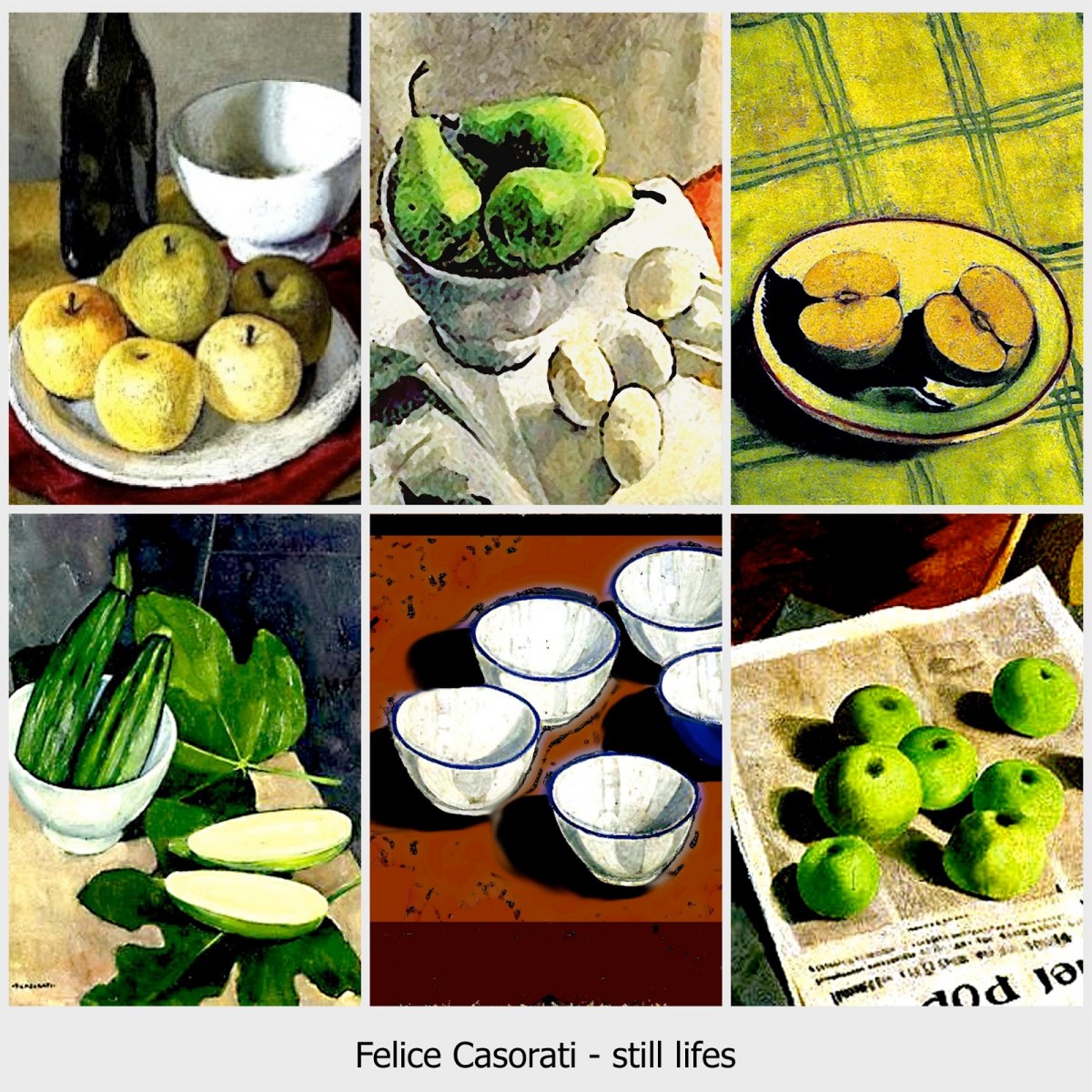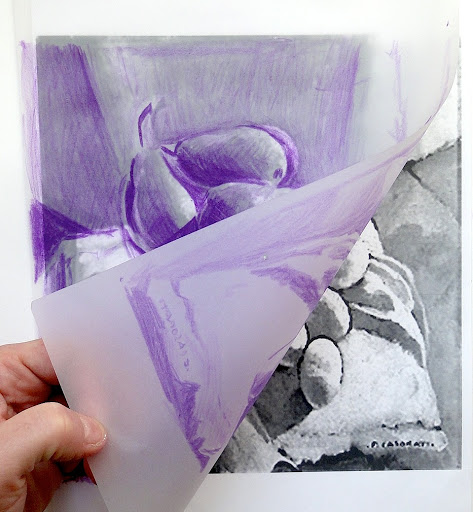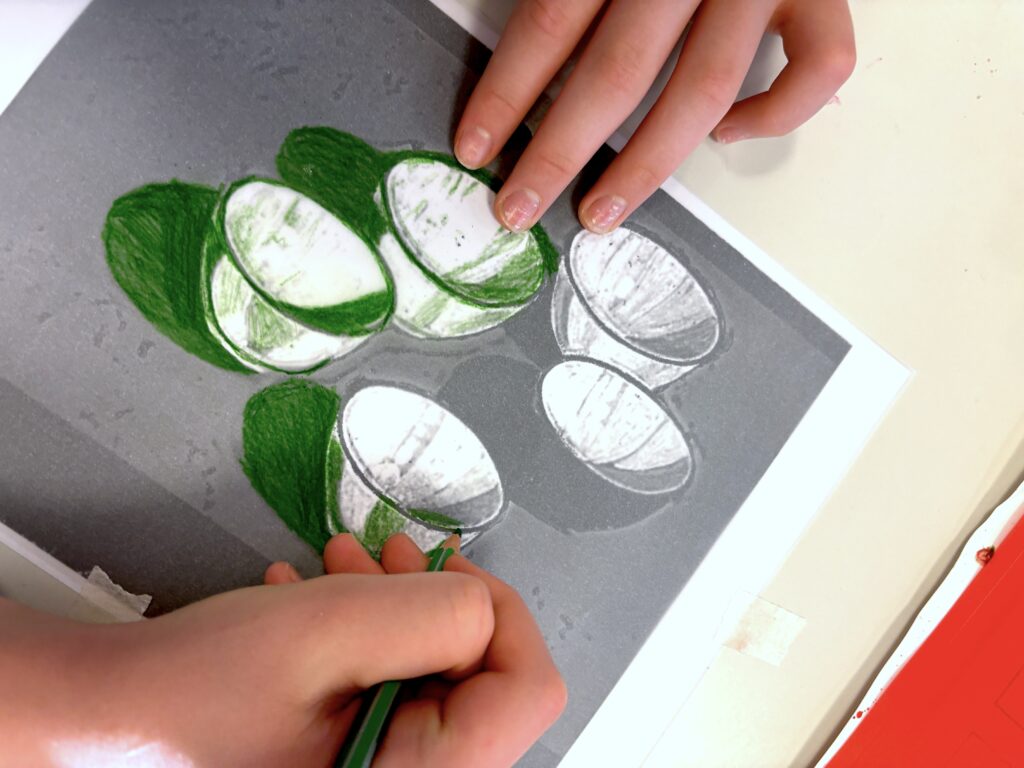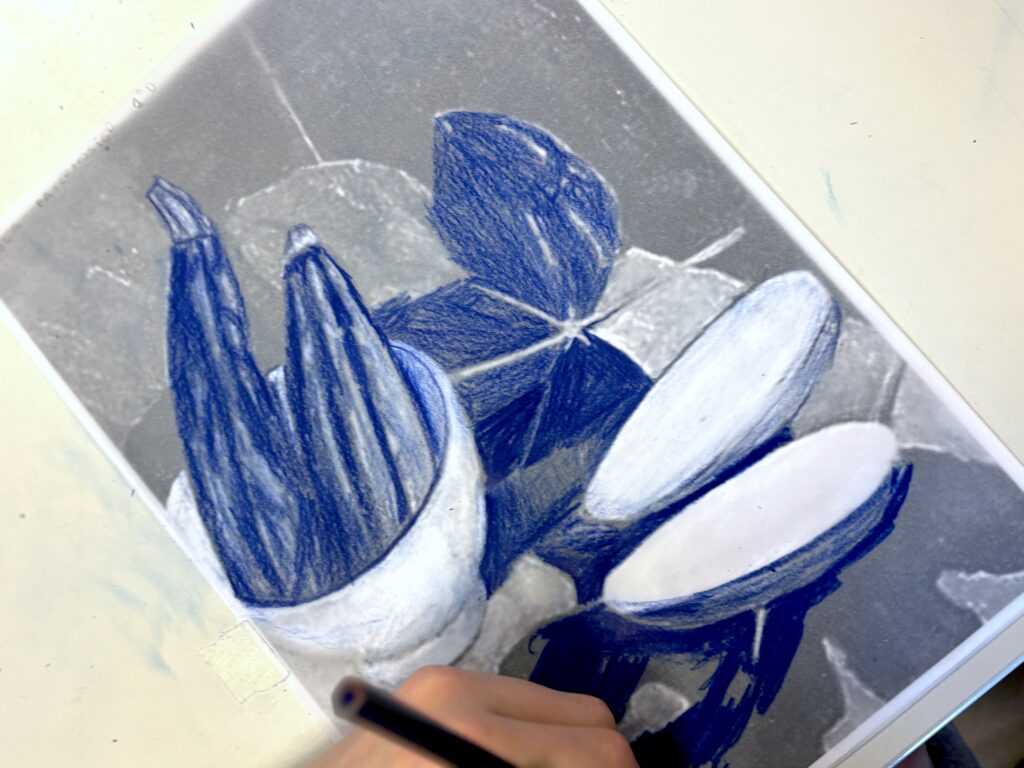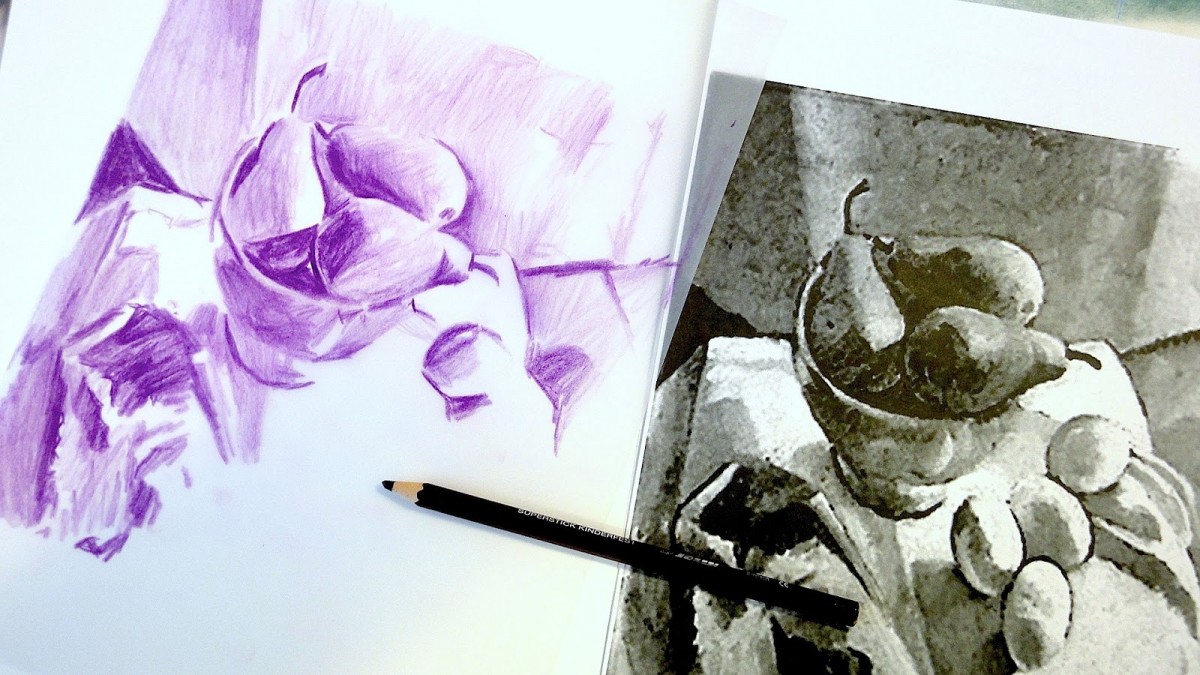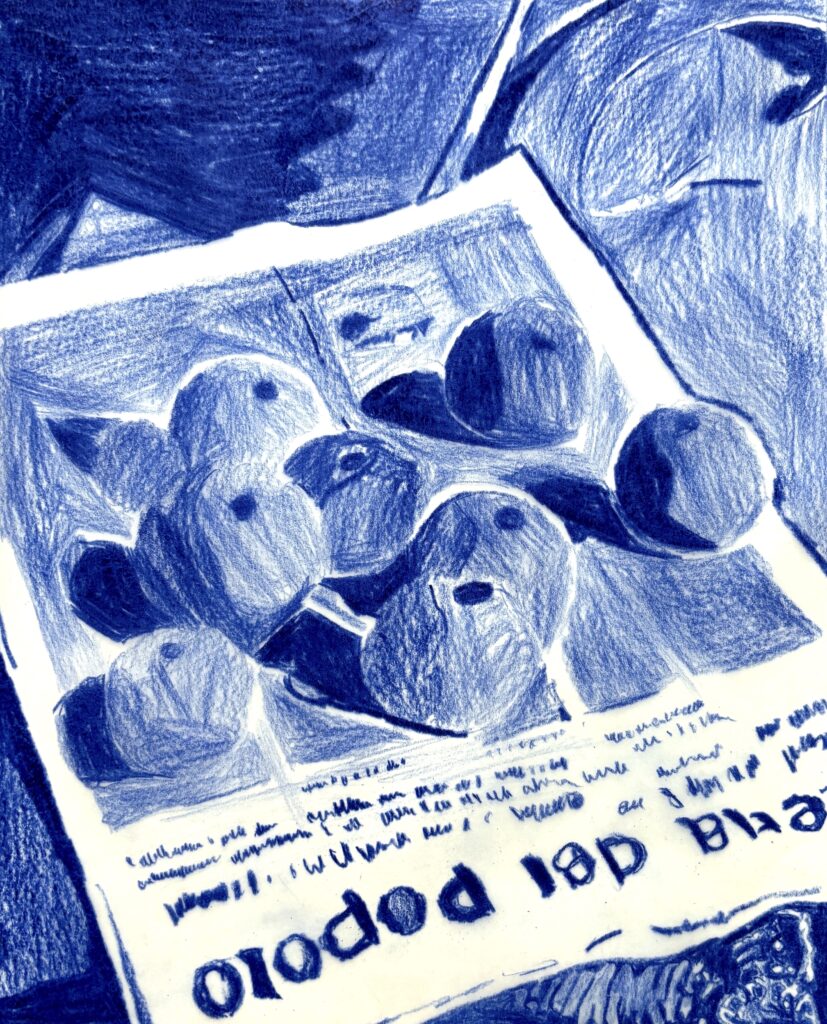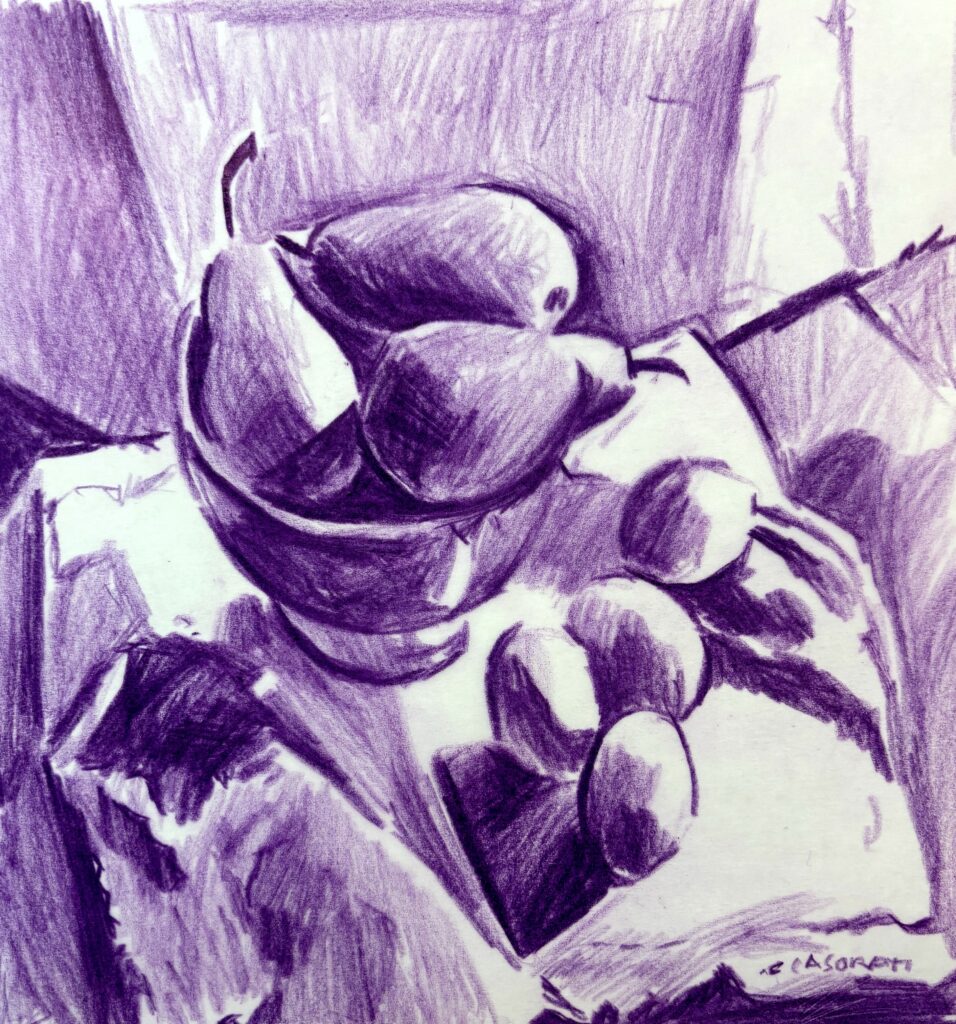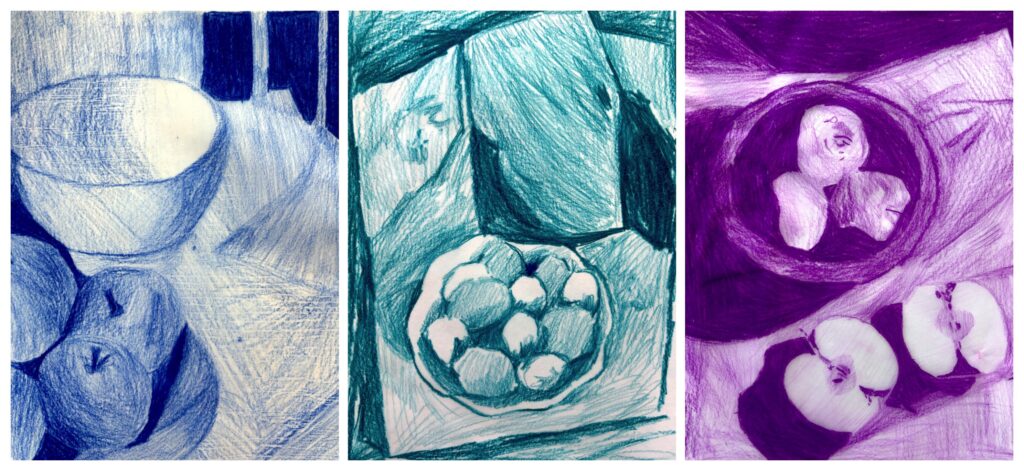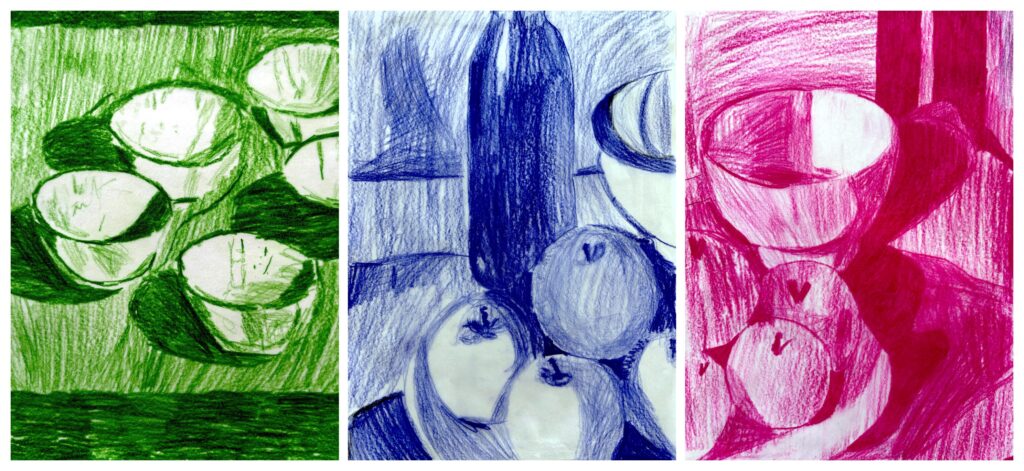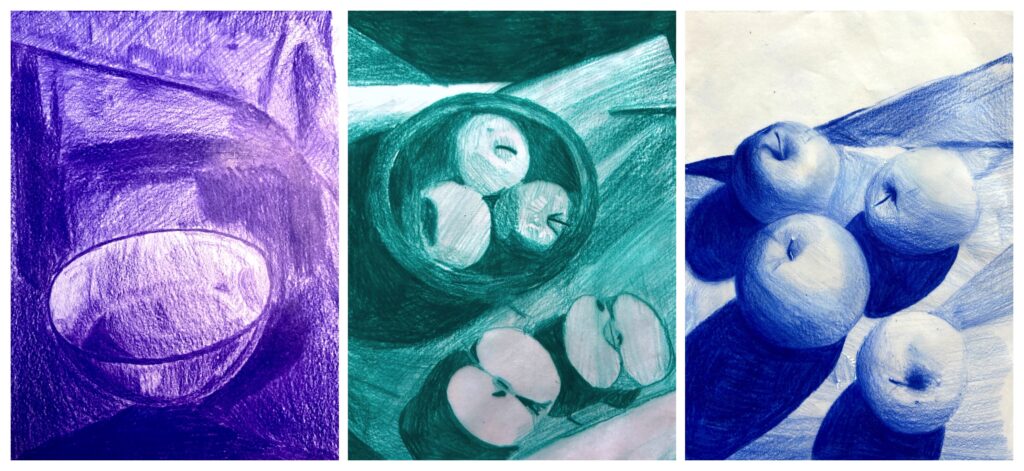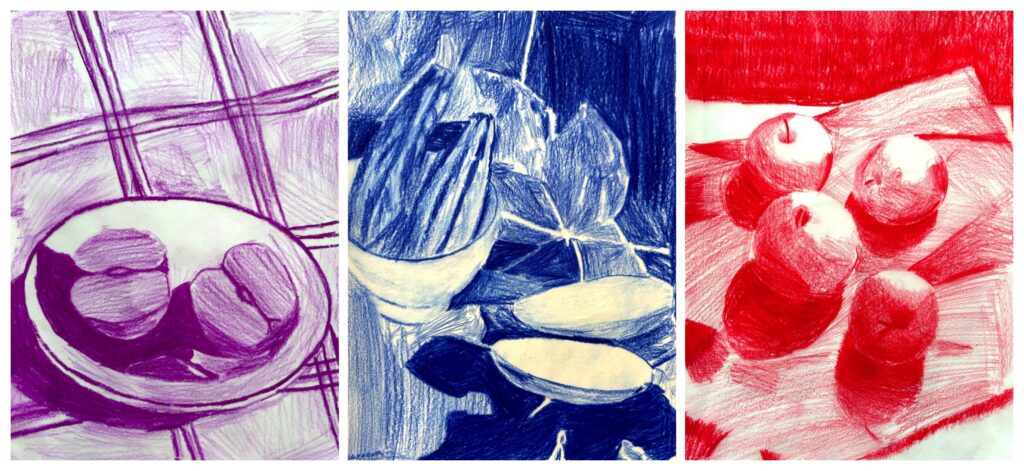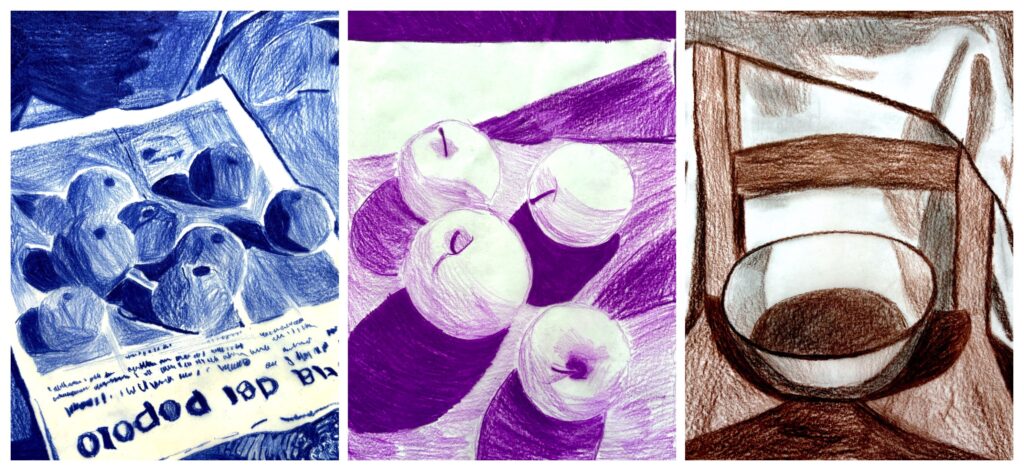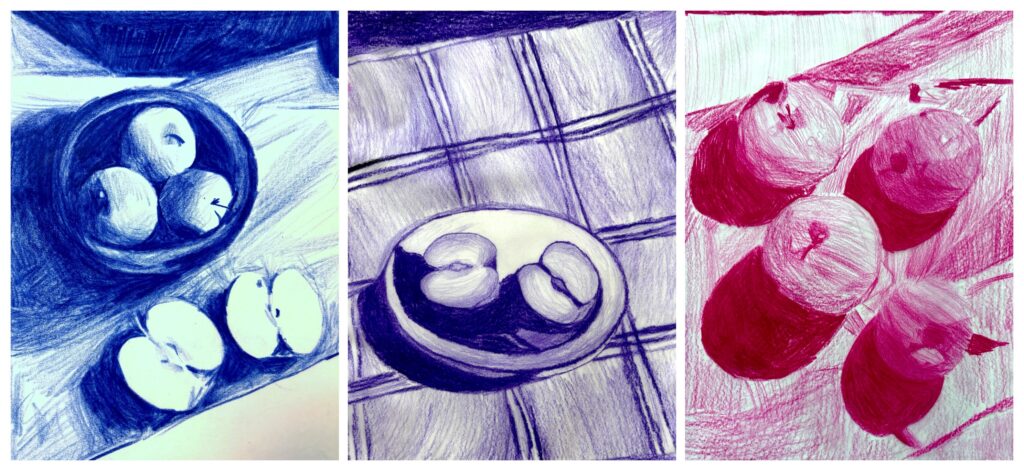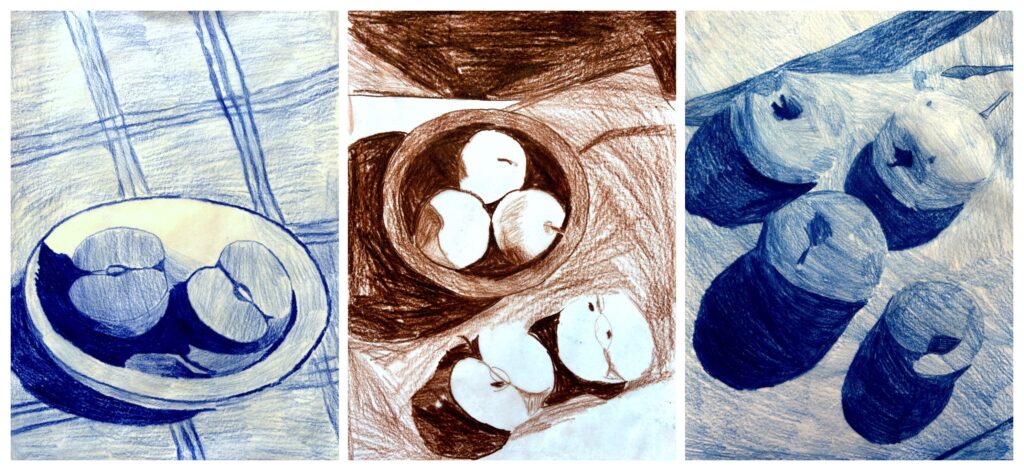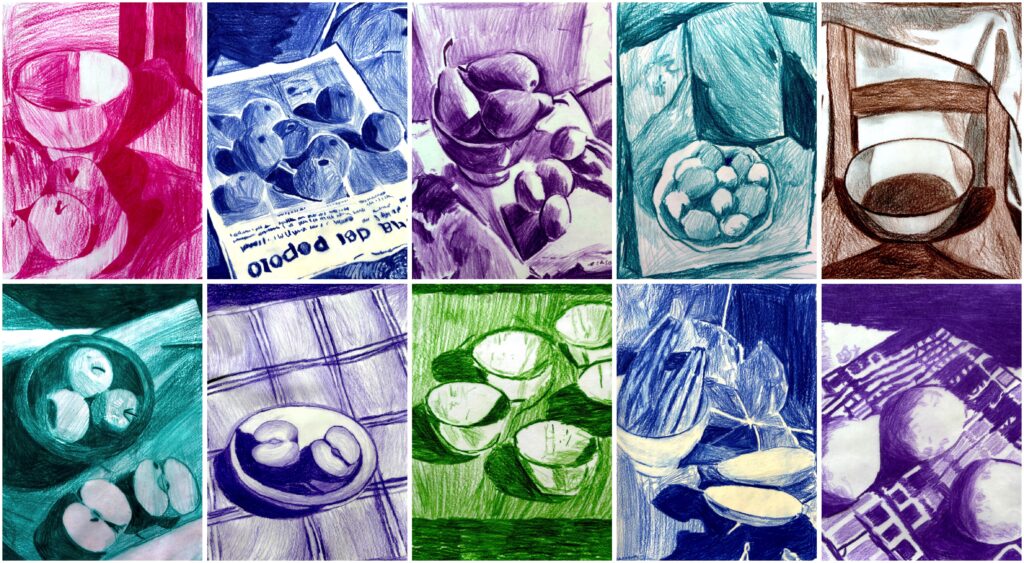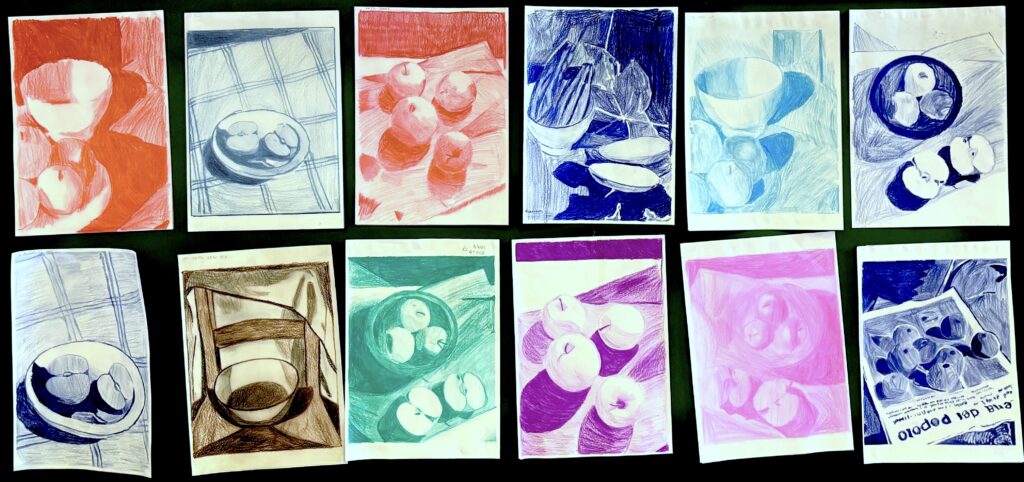
For this exercise on chiaroscuro we took inspiration from the still lifes of Felice Casorati (Italy 1883 – 1963). Casorati is one of the most important artists of the twentieth century in Italy, and one of the longest-lived of his era, having gone through the period of the avant-garde, up to the post-war period. Due to his long career and his many artistic activities it is not easy to pigeonhole him into a specific movement, but we can associate him with “Magical Realism”, with his return to order and realism after the expressionist and futurist avant-gardes.
This drawing activity was designed to help seventh grade students understand how many shades of chiaroscuro can be found in a black and white image, because the value of shadows, lights and tonal variations can be almost infinite. Another important objective is to create the image without tracing the contours of the objects represented, but working ONLY with shadows and lights.
Copying a black and white photograph or artwork makes it easier to understand the tonal scale of an image. Obviously this is not a drawing by life, but this exercise makes us understand how the variation in pressure on the pencil can determine a vast range of lights and shadows, and how it is not necessary to trace all the contours of an object to perceive its shape and volume.
For this drawing we used a black and white photocopy of Casorati’s still lifes or photographs inspired by his works. We used a sheet of tracing paper to overlay on the photocopy and a colored pencil. We use a color instead of pencil, in order to not confuse your drawing with the image below and to dose the chiaroscuro more effectively. Once the drawing is completed, the tracing paper is glued onto a white sheet to give more emphasis to the image.

